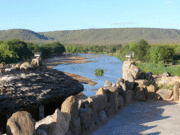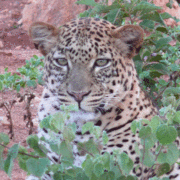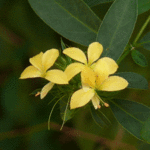15th November 2007
 Wednesday, November 21, 2007 at 04:37PM
Wednesday, November 21, 2007 at 04:37PM There wasn’t much rain last night in the end, and today it’s just been drizzling on and off – with one very short downpour preceded by gale-force winds. The river level has dropped again – not right down yet though – and is still red. It’s amazing how the character of the river has changed so dramatically, the high water having shifted the sandbanks, and changed the island placements, and replaced a lot of sand with a lot of mud. This journal should really be called “The Many Moods of My River”, for it really does change on a daily basis, depending on the water levels, the light, and indeed the different animals which pass by it.
Despite the rain not having been heavy, the environment is responding to the damper conditions. There are new flowers starting to bloom daily – I was out photographing them this evening. The light was grey and not very enticing, but nonetheless I thought the flowers looked beautiful - it did make it difficult to photograph them in their full glory though. There was a bush covered in white-yellow clusters of tiny flowers, which was so lovely – I’m going to try to photograph it again in better light if I get the chance, to really give you an idea of its brightness. And then there was the grewia lilacina with its beautiful pink flower which blossoms before the leaves sprout on the bush. This is the same family of plant as the bright yellow flowers (grewia holstii), which I photographed on 26th October. Down near the well, a gorgeous large yellow-orange flower was out in bloom, on its long spindly stalk. My father calls this the “four o’clock flower” because it opens its petals at that time every day. According to my flower books (yes, I got a new one when I was last in Nairobi, and between the old and the new, I’m managing to identify a few more flowers), this whole family of flowers (called abutilon) only flower after midday. There are about 30 different abutilon species in Africa, evergreen shrubs with strong stem fibres. Apparently some of their seeds are used as a coffee substitute. This particular one, a gorgeous golden yellow colour, is abutilon mauritianum (I think?).
On one bush which had tiny clusters of white flowers which looked like they weren’t quite fully open (or perhaps this is just how they are?), there were dozens and dozens of giant red and black wasps feeding on the nectar. The wasps must have been 7-8cm long – quite fearsome looking beasts!
In our balcony flowerbeds too, there are new flowers appearing – there are more of the peachy-pink ones around the corner beyond my father’s room – the same type that we also have outside our own bedroom – I have discovered this is indigofera schimperi, a woody herb of the bean family. There are about 320 species of indigofera in Africa, 147 of which are found in East Africa, and one of which yields indigo dye.
There is another very tiny, very beautiful white flower growing there too – identifying that eludes me at present, but it certainly is delicate and pretty beyond words. The short-lived yellow beauties (as I call them) that have self-seeded all over the place in our balcony garden (and outside under the Hippo Lawn commiphora tree), and grow from a strange green bulb, have produced their bright orange seed pods overnight – they are quite the most striking colour, and add some real pizzazz to our balcony flowerbed, where the much-photographed lilies are growing apace but showing no sign of flowering. My father says these lilies normally flower before they come into leaf – so perhaps this means these ones won’t flower at all?
Now that there is a little more water in the river, the hippos seem to be dispersing – no doubt happy not to be all huddled together any more in the deep water by the bend in the river. The fish are spawning too, you can see the commotion in the shallows – so can the crocodiles – one was there today, snapping here and there and trying to catch the fish unawares. I don’t think it was all that successful, as it soon moved away. The Green Backed Heron is back to his old tricks again, on the riverbank right below our balcony, head down, beak out straight, standing absolutely motionless and waiting for prey.
We saw more new birds today – strange how we’ve known this area for so long, and yet still we see birds which are allegedly common here but which we’ve never seen before…We added the Pale Flycatcher and the Red-fronted Warbler to our Bird List.
We got another great view of a Red Chested Cuckoo, sitting atop an acacia tree in ‘The Peaceful Place’ – it’s unusual to see cuckoos out in the open like this, so we’ve been lucky with our recent sightings. I think this is a male cuckoo – apparently the males of this species are quite variable, some with completely barred underparts, and others with a brighted red chest and no barring at all. Our chap was somewhere in between the two, I think. We also spotted a Kingfisher nest hole in the side of the sandbank – you can clearly see the two parallel tracks made by their feet as they go in and out of the hole.
[PHOTOS FOR THIS ENTRY ARE COMING SOON. IN THE MEANTIME, WHY NOT TAKE A LOOK AT THE PHOTO STORIES ALREADY POSTED?]




Reader Comments